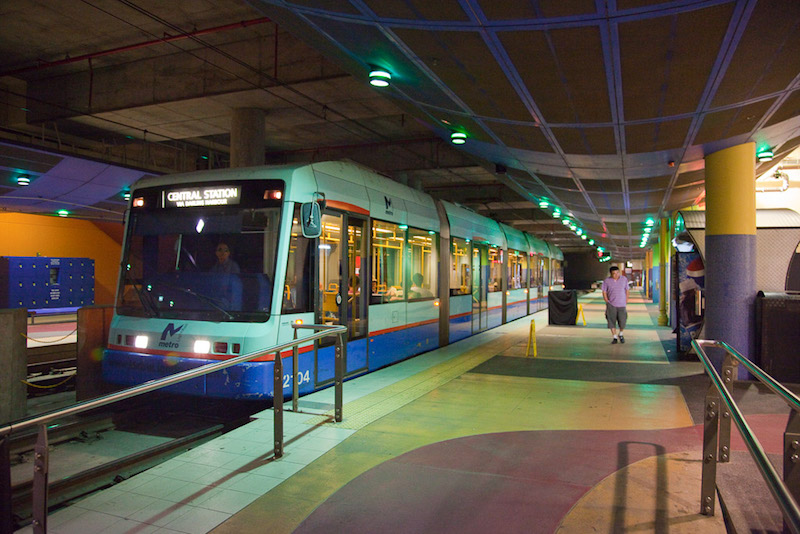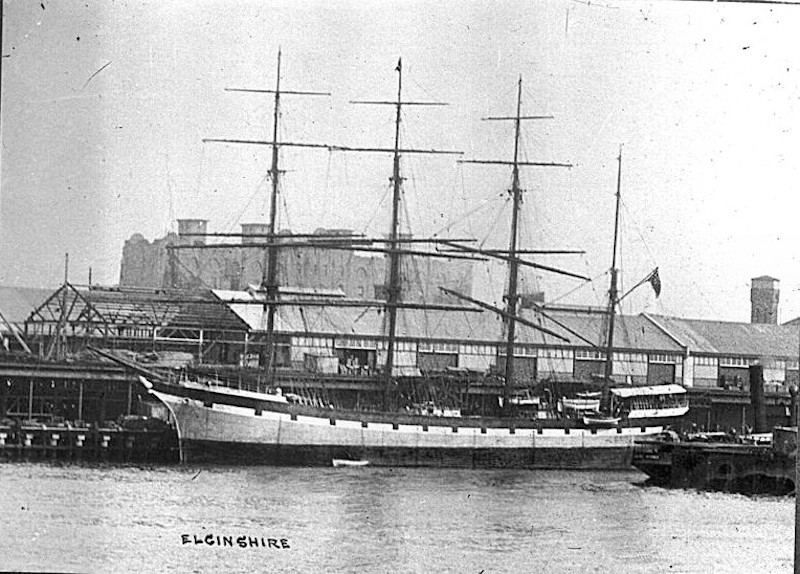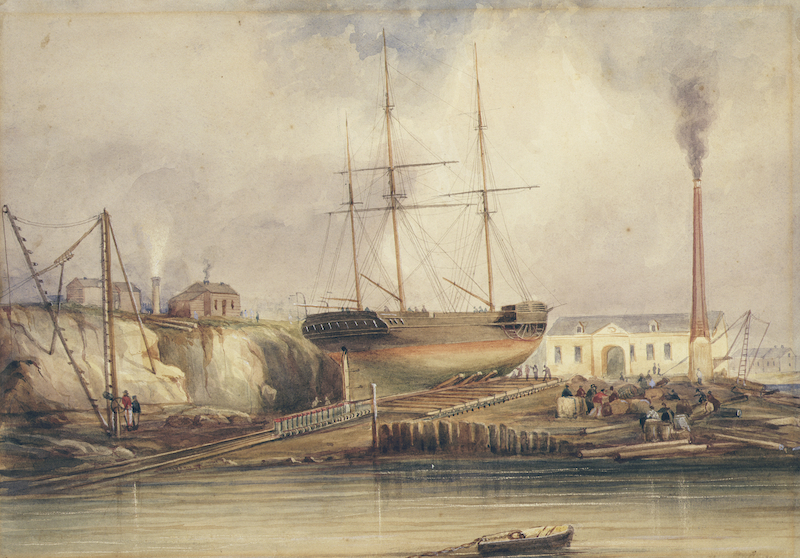Industry > Transport
Transport
Private Transport
Until the 1840s Pyrmont people travelled on foot, or in small boats. When draft horses were introduced to haul sandstone from the new quarries to building sites, it was common to see timber jinkers haul huge loads through the streets while people still walked to work, to school or to pubs.
When CSR built its Pyrmont refinery, the C. J. McCaffery haulage company followed. By 1914, they had 152 horses pulling bulk sugar through the refinery, and taking bagged sugar to the City. However, in 1937 CSR began to buy trucks: the last draft horse departed in 1955.
Meanwhile ship-building shaped Pyrmont’s economy: first Chowne, then the Australian Steam Navigation Company on Darling Island. CSR chose to move to Pyrmont for deep water wharves and built another jetty, extending Harris Street into the bay.
The Sydney Railway Company (formed in 1848) built a freight terminal at Darling Harbour and opened the access rail line in 1855. The rail service struggled for custom in the 1860s, but revived to handle farm produce and wool. By 1891, all Sydney’s exports passed through Darling Harbour.
Advanced technology on Jones Bay Wharf linked rail, road and sea transport: a double row of two-storeyed steel and timber sheds with central roadways to both levels. The Wharf linked to Darling Harbour and the railway network, bringing volumes of wool and wheat for export.
The Wharf embarked troops for the Second World War and welcomed migrants afterwards. However, from the 1960s containers were better handled at Botany Bay and passengers better served at the new overseas passenger terminal at Circular Quay. In 1991 Jones Bay Wharf was declared redundant, and a few years later it was redeveloped for offices.
Public Transport
A new train route around Rozelle Bay and Pyrmont opened in 1922. It declined in importance but was used by a weekly wheat train to the Edwin Davey Flour Mill until 1996. The route enjoyed a second life as the Sydney Light Rail, carrying passengers. The first section, from Central to Wentworth Park opened in 1997 and now uses all the old route, to Dulwich Hill.
Between 1879 and the 1950s, trams carried most Sydney travellers. The service from Railway Square along Harris Street to Pyrmont was connected in 1898, powered by the Ultimo power station. From 1910, a branch turned left into Miller Street, right into Bank Street and crossed Glebe Island Bridge to Balmain.
In 1917 the fulltime service to Pyrmont was withdrawn, and in 1953 the last regular tram completed its journey and buses took over many routes pioneered by trams.
The first motor vehicle landed in Sydney in 1900, but Pyrmont’s narrow streets and poor families were hardly affected. For another forty years children played in the streets. As streets were sealed and widened to support trucks, they could also support cars; so managers and professional staff began to commute from pleasanter suburbs. By the end of World War II, houses and lanes had been demolished to create car parks. Cars (and the NRMA) then squeezed out trams.
Related Items
Further Reading
Glebe Island 1857, W.G. Mason

Horse drawn carriages and carts 1911, Union St & Pyrmont Bridge Rd. City of Sydney archives

Darling Island works 1860

Steam train in Darling Harbour

Jones Bay Wharf 1960s

Harris St 1950

Light rail, Star City 2010, Photo Ambanmba
Patent slip belonging to Australian Steam Navigation Company 1859-1871, Frederick Garling












































